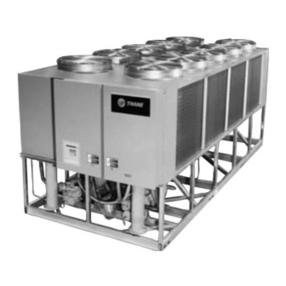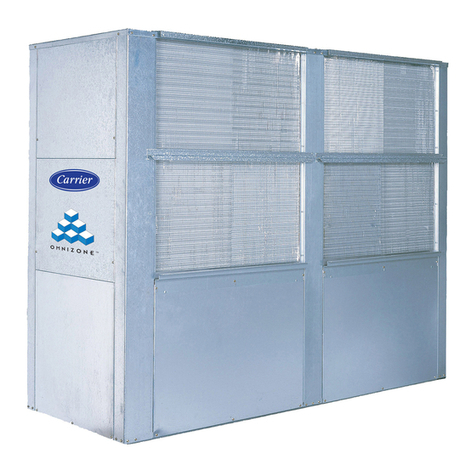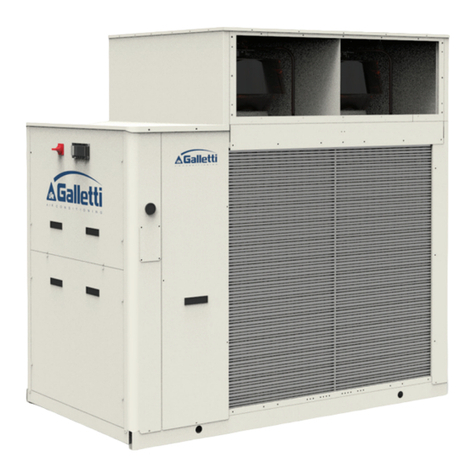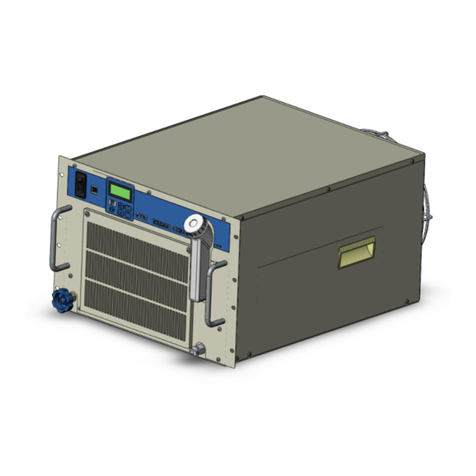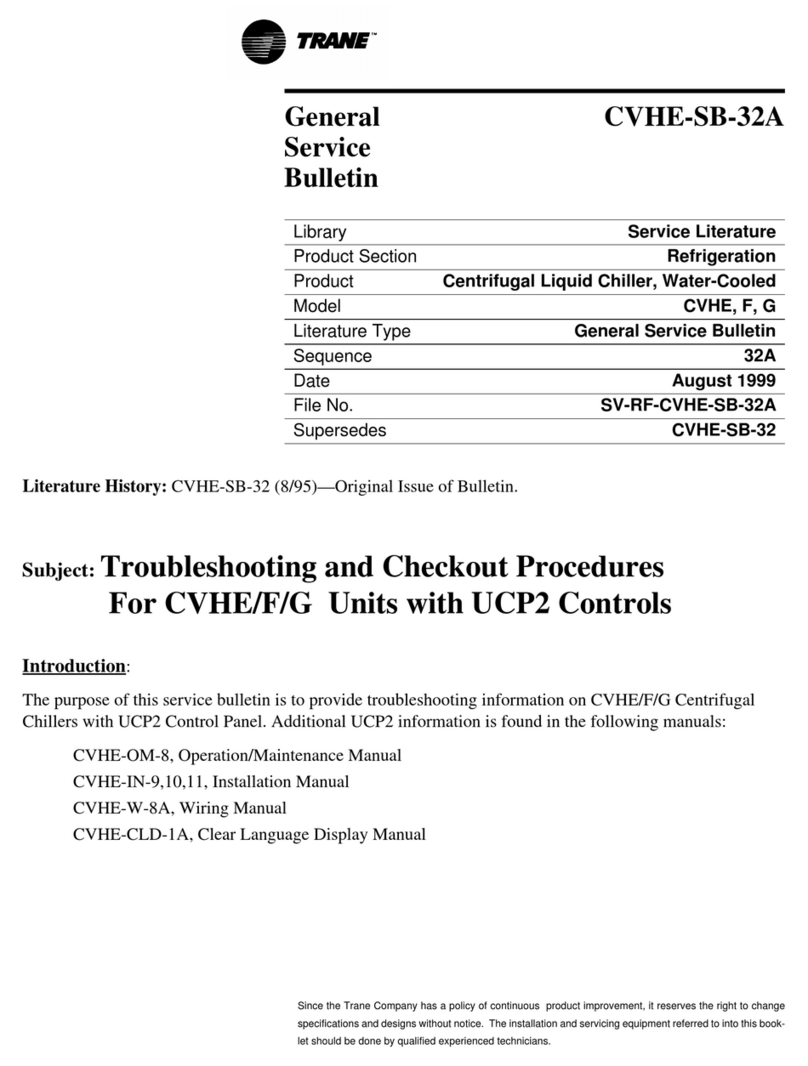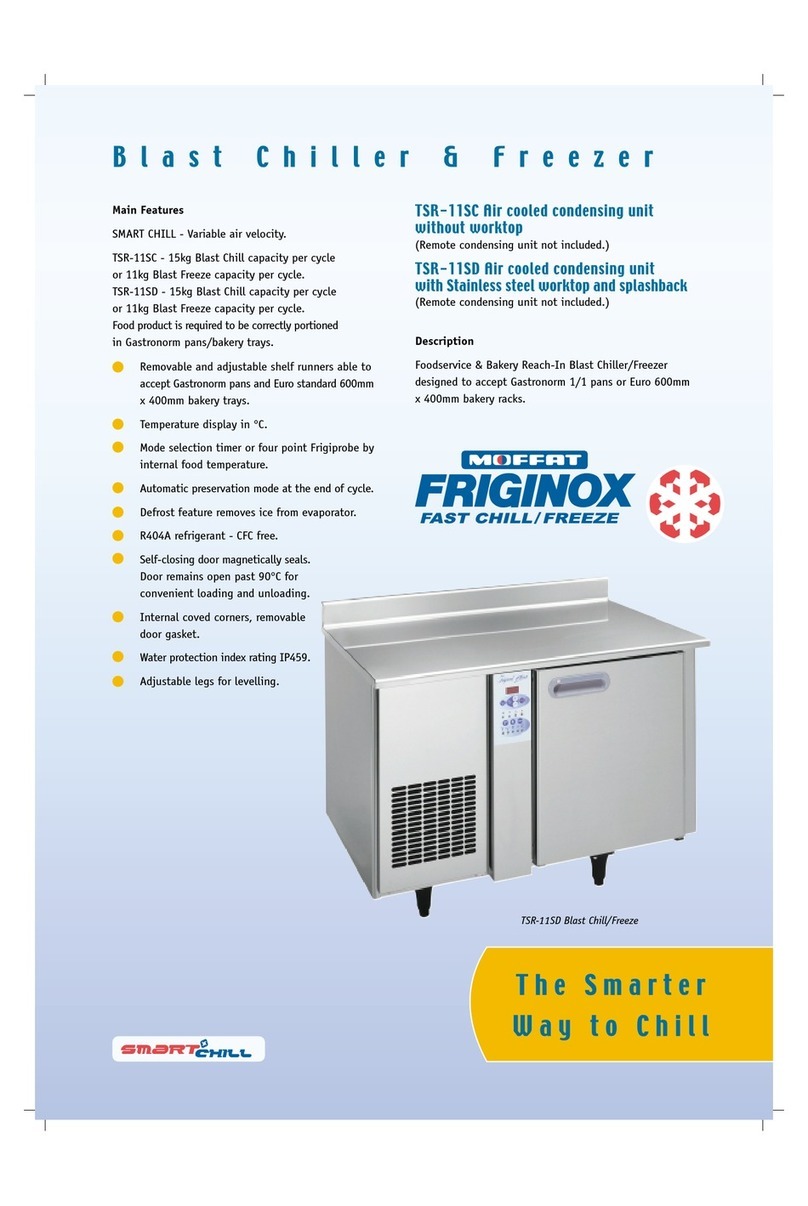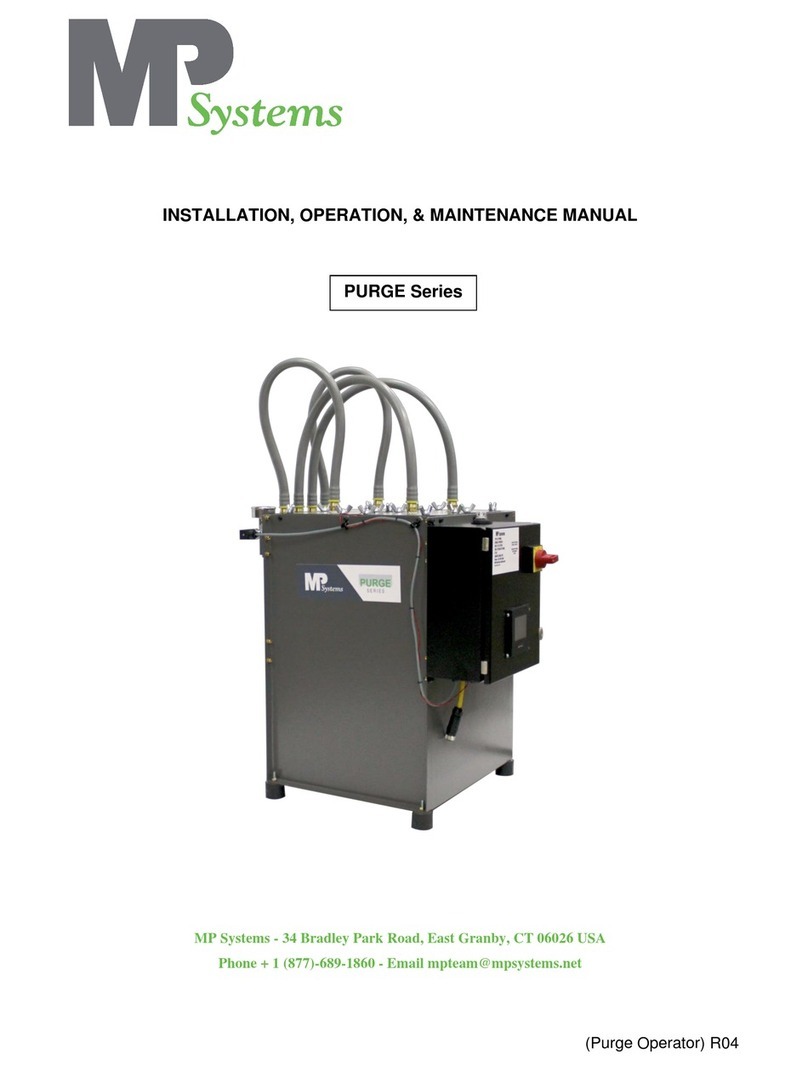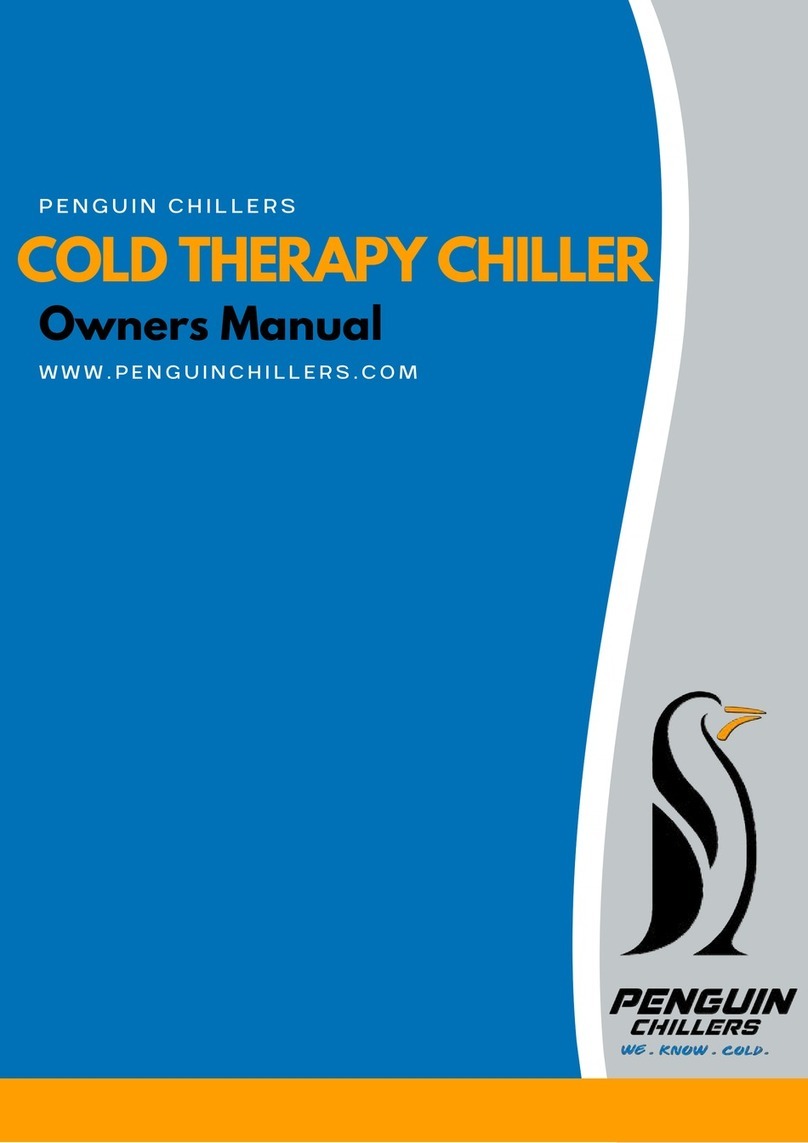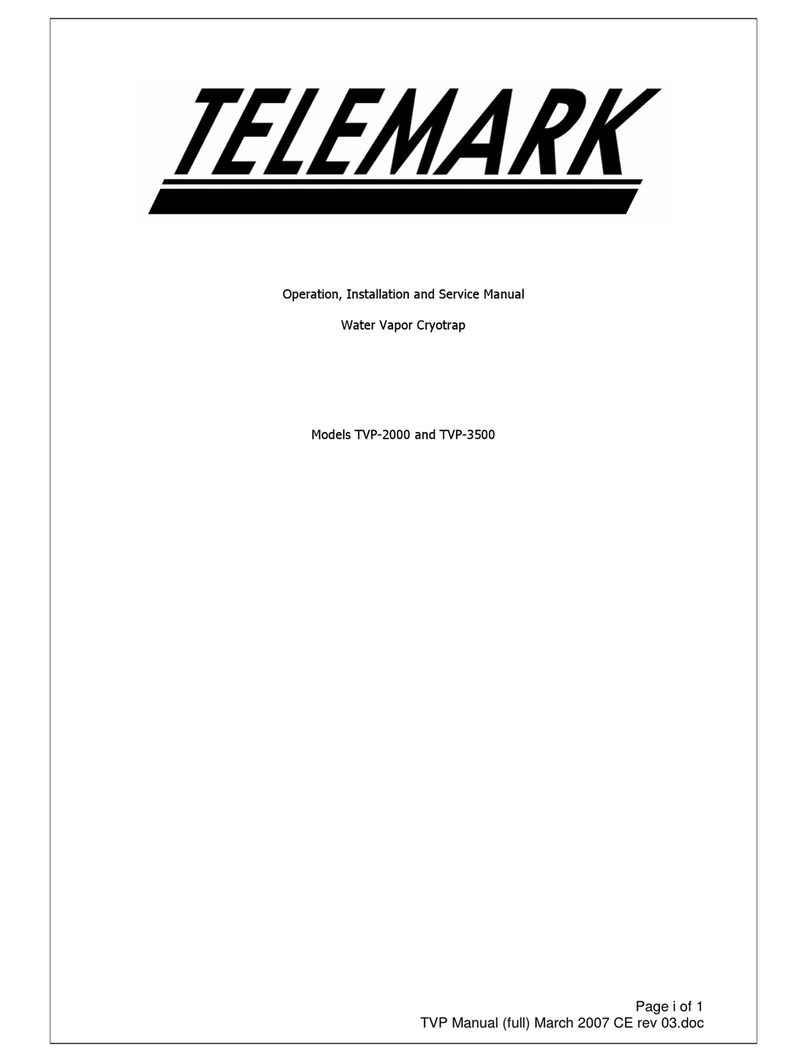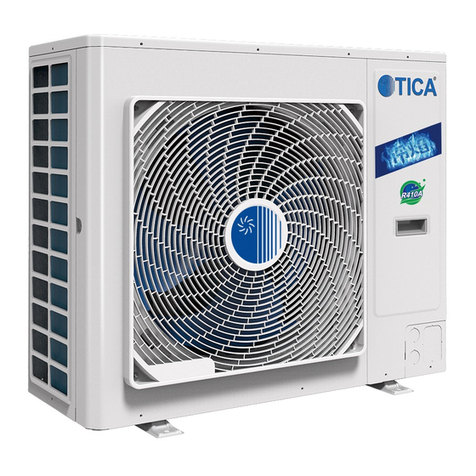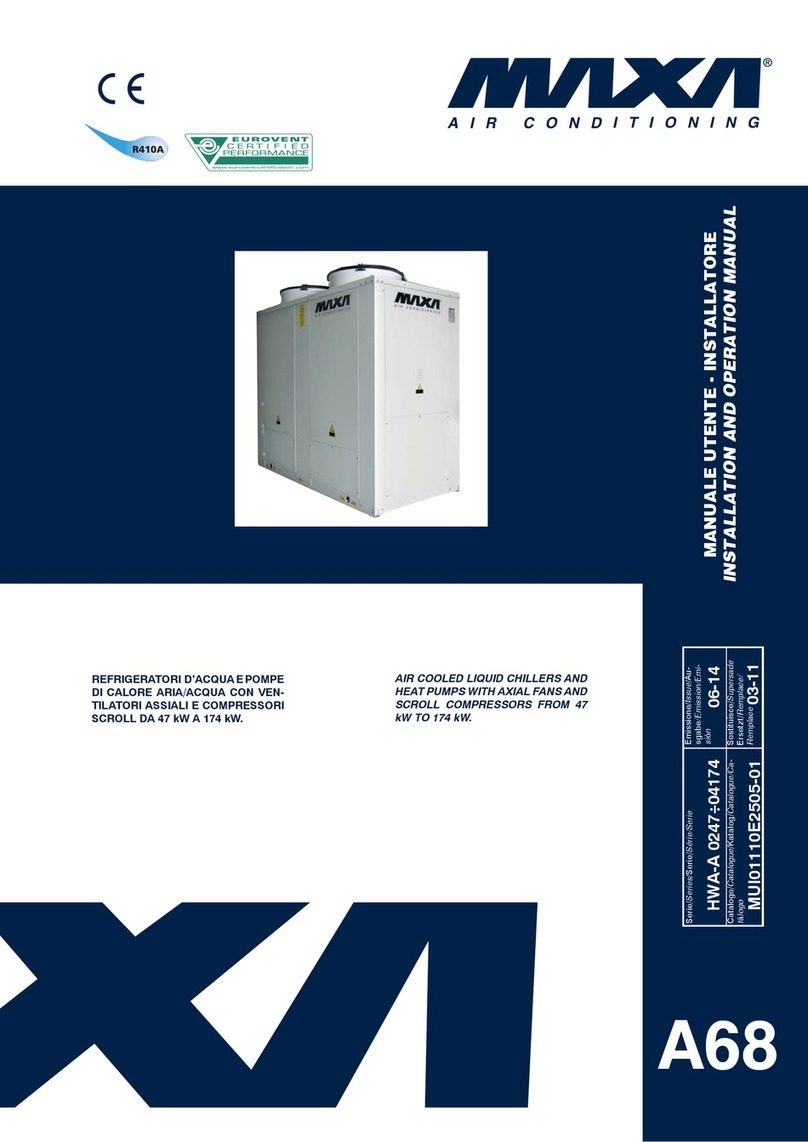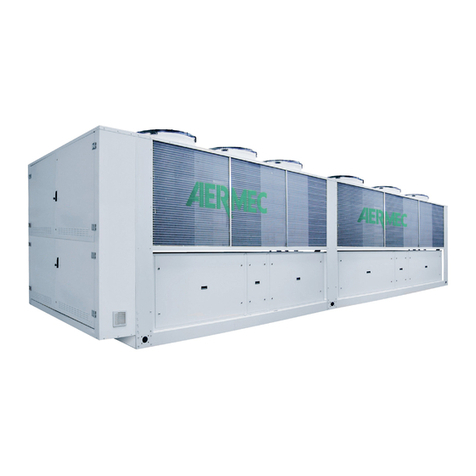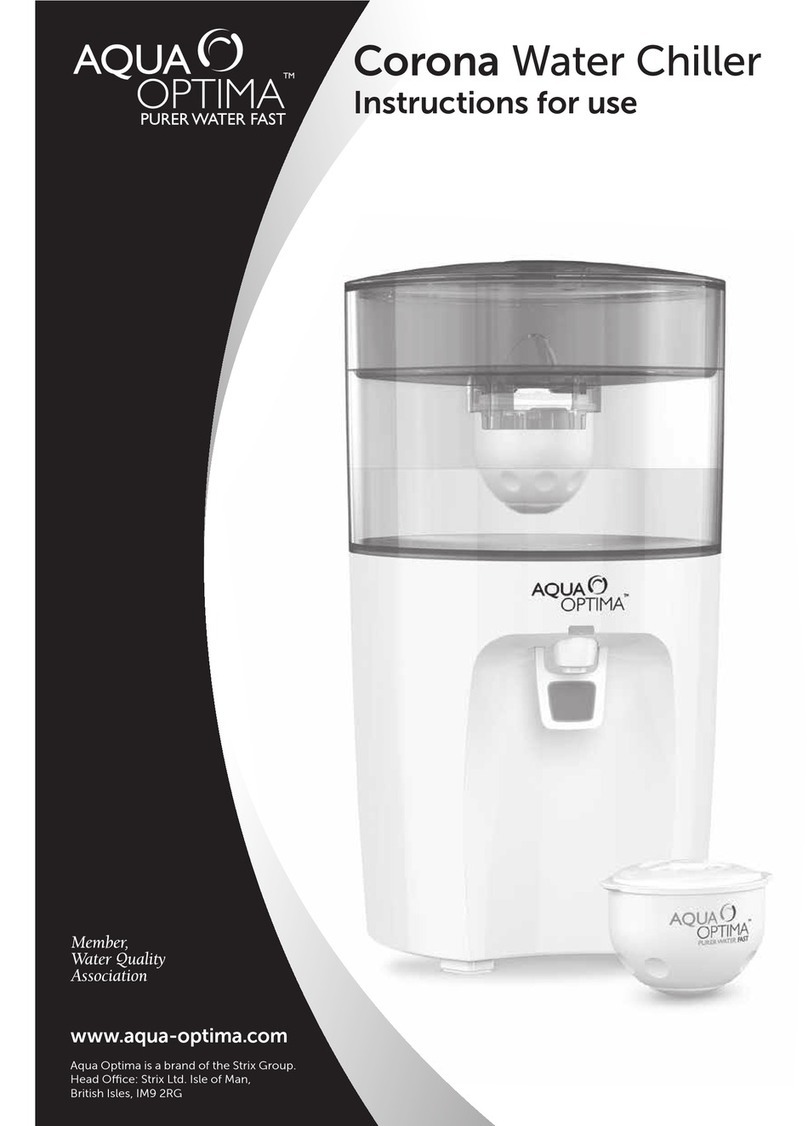
7
TIGHTNESS TEST
Fill the cooling circuit with gaseous R407C and reach a 1 bar pressure. Then add nitrogen through bombs equipped
with a reducing valve and reach a 15 bar pressure. Check leaks with the leak detector. If leaks are detected exhaust
the cooling circuit before welding (with copper-phosphor alloy and 2% silver).
It is important that the cooling system is completely exhausted before welding, to prevent explosions. Never
use oxygen as a substitute of nitrogen, otherwise explosions might occur.
COOLING CIRCUIT DRAINING AND DRYING
For a good vacuum condition use a suitable pump (1.4 mbar absolute pressure, 30 l/min. capacity). When the circuit
is opened for a very short time, with this pump you normally need only one vacuum operation to reach the absolute
pressure of 1.4 mbar.
If such a vacuum pump is not available, or if the circuit remains open for a long time, we strongly recommend that
you follow the three-fold pumping method.
Such method is also advisable if moisture is present in the circuit.
The vacuum pump must be connected to the intake openings.
Comply with the following procedure:
─Evacuate the circuit up to a 35 mbar absolute pressure at least, then fill the cooling circuit with R407 C and reach
an about 1 bar pressure;
─Repeat the above described operation and reach an absolute pressure of 35 mbar;
─Repeat the above described procedure a third time and reach an absolute pressure which should be as low as
possible.
REFRIGERANT CHARGE
Always follow this procedure:
─Connect the refrigerant bomb to the 1/4” SAE male intake on the liquid line, blow out some gas to exhaust air from
the interconnection tube;
─Capsize the bomb and fill the circuit with liquid refrigerant: fill 75% of total charge;
─Now connect it to the intake on the suction line and, holding the bomb upright, fill the line completely until in the
chiller the temperature of the liquid tube, before the filter, is 7-8°C lower (or 4°C lower in case of heat pumps) than
the °C temperature read on the R407C pressure gauge on the distribution tube.
DISMANTLING
When the unit is to be dismantled, drain the cooling circuit and collect the gas through a suitable receiver.
This operation ensures safety to persons and environment.
IMPORTANT: DO NOT DISPOSE OF GAS CONTAINED IN THE COOLING CIRCUIT IMPROPERLY
FOR ANY REASON.
When the unit is dismantled or the compressor is replaced carefully pour compressor's oil into a suitable
receiver and send it to a specialised centre for oil disposal.
IMPORTANT: DO NOT DISPOSE OF COMPRESSOR OIL IMPROPERLY FOR ANY REASON.
